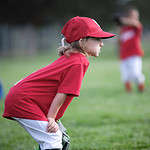Batting average is one of the most commonly used statistics in baseball to measure a player’s performance at the plate. Simply put, batting average is the percentage of at-bats in which a player gets a hit. A good batting average is generally considered to be around .300 or higher, but this can vary depending on the level of play.
While a batting average of .300 may seem like a lofty goal, it is important to remember that hitting a baseball is one of the most difficult tasks in all sports. Even the best players in the world fail to get a hit in the majority of their at-bats. That being said, a player who consistently hits above .300 is considered to be an elite hitter and can greatly contribute to their team’s success.

Understanding Batting Average
Batting average is a statistic used in baseball to measure the performance of a batter. It is calculated by dividing the number of hits a batter has by the number of at-bats they have taken. The result is a percentage that represents the batter’s success in getting hits.
A good batting average is typically considered to be around .300, which means the batter gets a hit in 30% of their at-bats. However, what constitutes a good batting average can vary depending on the level of play. In professional baseball, an average of .250 or higher is generally considered to be good, while in amateur leagues, an average of .300 or higher may be considered good.
It is important to note that batting average is not the only measure of a batter’s performance. Other statistics, such as on-base percentage and slugging percentage, can also provide valuable information about a batter’s abilities.
Here is a table that shows how batting average is calculated:
| Hits | At-Bats | Batting Average |
|---|---|---|
| 10 | 30 | .333 |
| 20 | 80 | .250 |
| 40 | 120 | .333 |
As you can see, a higher number of hits will result in a higher average, while a higher number of at-bats will result in a lower average.
In conclusion, batting average is a key statistic in baseball that measures a batter’s success in getting hits. While a good batting average can vary depending on the level of play, it is generally considered to be around .300 in professional baseball. However, it is important to consider other statistics as well when evaluating a batter’s performance.
Historical Context of Batting Average
Batting average is one of the most commonly used statistics in baseball. It is a measure of a player’s success at the plate and is calculated by dividing the number of hits a player has by the number of at-bats. A good batting average is often considered to be around .300, although this can vary depending on the era and the league.
The origins of batting average can be traced back to the late 1800s when Henry Chadwick, a prominent baseball writer and statistician, began tracking and analyzing player performance. In 1887, Chadwick introduced the concept of batting average as a way to measure a player’s hitting ability.
Throughout the history of baseball, batting average has been a key indicator of a player’s success. In the early days of the sport, when hitting was less common and scoring was lower, an average of .300 or higher was considered exceptional. As the game evolved and offensive strategies changed, higher averages became more common.
In the modern era of Major League Baseball, an average of .300 is still considered a benchmark of success. However, with changes in the way the game is played and the increased emphasis on power hitting and on-base percentage, batting average is no longer the sole measure of a player’s hitting ability.
Despite this, batting average remains an important statistic in the history of baseball and a key indicator of a player’s success at the plate.
Components of Batting Average
Batting average is a key statistic used to measure the success of a player in baseball. It is calculated by dividing the number of hits by the total number of at-bats. A good average is typically considered to be around .300 or higher.
There are several components that contribute to a player’s batting average:
Hits
A hit is defined as any time a batter makes contact with the ball and reaches base safely. Hits can be further broken down into singles, doubles, triples, and home runs.
At-Bat
An at-bat is defined as a plate appearance that does not result in a walk, hit-by-pitch, sacrifice fly, or catcher’s interference. It is important to note that not all plate appearances are considered at-bats.
Plate Appearance
A plate appearance is defined as any time a player comes to the plate to bat. This includes at-bats as well as walks, hit-by-pitches, sacrifice flies, and catcher interference.
Base
A base is a safe area on the field where a player can stand without being tagged out. There are four bases on the field: first, second, third, and home.
Player
A player is any individual who participates in a baseball game. This can include both hitters and fielders.
Hitter/Batter
A hitter or batter is a player who is attempting to hit the ball and reach base safely.
In conclusion, understanding the components of batting average is crucial for evaluating a player’s performance at the plate. Hits, at-bats, plate appearances, bases, and the player’s role as a hitter/batter all contribute to this important statistic.

Significance of a Good Batting Average
A good batting average is a crucial metric for measuring a player’s performance in cricket. It is the number of runs a player scores per innings divided by the number of times they have been dismissed. A high batting average indicates that a player is consistent and reliable in scoring runs, making them a valuable asset to their team.
A good batting average varies depending on the level of competition. In professional cricket, a batting average of 50 or above is considered excellent, while in amateur cricket, a batting average of 30 or above is considered good. It is important to note that a good batting average alone does not guarantee success, as other factors such as strike rate and the ability to score runs in pressure situations also play a significant role in a player’s performance.
A player’s batting average is also a reflection of their overall performance, as it takes into account the number of times they have been dismissed. A player with a high batting average has a better chance of contributing to their team’s success by scoring runs consistently and keeping the scoreboard ticking.
In conclusion, a good batting average is a critical factor in measuring a player’s performance in cricket. It indicates their consistency and reliability in scoring runs and is a reflection of their overall performance. However, it is important to remember that a good batting average alone does not guarantee success, as other factors also play a significant role in a player’s performance.
Top Averages in History
When it comes to baseball, batting average is one of the most important statistics. It measures a player’s success at the plate, and a high average can make the difference between a good player and a great one. Over the years, there have been some incredible numbers that have set records and become the stuff of legend.
One of the most impressive batting averages in history belongs to Ty Cobb. He had a career average of .366, which is the highest of all time. Cobb played for the Detroit Tigers from 1905 to 1926, and during that time he won 12 batting titles. His incredible skill at the plate made him one of the most feared hitters of his time.
Another player who had an impressive batting average was Ted Williams. He played for the Boston Red Sox from 1939 to 1960 and had a career batting average of .344. Williams was known for his incredible eye at the plate and his ability to hit for power and average. He won six batting titles during his career and was inducted into the Hall of Fame in 1966.
Rogers Hornsby was another great hitter who had an impressive average. He played for the St. Louis Cardinals and the Chicago Cubs from 1915 to 1937 and had a career batting average of .358. Hornsby won seven batting titles during his career and was known for his incredible consistency at the plate.
Hugh Duffy was a player from the late 1800s who had an incredible average of .440 in 1894. This is the highest single-season batting average in history. Duffy played for several teams during his career, including the Chicago White Stockings and the Boston Beaneaters.
Nap Lajoie was another player from the early days of baseball who had an impressive batting average. He played for several teams from 1896 to 1916 and had a career average of .338. Lajoie won three batting titles during his career and was known for his ability to hit for power and average.
Joe Jackson, also known as Shoeless Joe Jackson, was a player from the early 1900s who had a career batting average of .356. Jackson played for several teams during his career, including the Cleveland Indians and the Chicago White Sox. He was known for his incredible power at the plate and was one of the best hitters of his time.
Tony Gwynn was a player from the 1980s and 1990s who had an incredible career batting average of .338. Gwynn played for the San Diego Padres from 1982 to 2001 and was known for his incredible consistency at the plate. He won eight batting titles during his career and was inducted into the Hall of Fame in 2007.
Bill Bergen was a catcher from the early 1900s who had a career batting average of .170. While this may not seem impressive, Bergen was known for his incredible defensive skills and was one of the best catchers of his time.
Chris Davis is a recent player who has struggled with his batting average. He played for the Baltimore Orioles from 2011 to 2020 and had a career average of .233. Davis was known for his incredible power at the plate, but he struggled with consistency throughout his career.
Ed Delahanty was a player from the late 1800s and early 1900s who had an impressive career batting average of .346. Delahanty played for several teams during his career, including the Philadelphia Phillies and the Washington Senators. He was known for his incredible power and was one of the best hitters of his time.
Billy Hamilton was a player from the late 1800s who had an incredible career batting average of .344. Hamilton played for several teams during his career, including the Philadelphia Phillies and the Boston Beaneaters. He was known for his incredible speed on the basepaths and was one of the best leadoff hitters of his time.
Harry Heilmann was a player from the 1920s and 1930s who had an impressive career average of .342. Heilmann played for several teams during his career, including the Detroit Tigers and the Cincinnati Reds. He was known for his incredible consistency at the plate and was one of the best hitters of his time.
Babe Ruth is one of the most famous baseball players of all time, and he had an impressive career batting average of .342. Ruth played for several teams during his career, including the Boston Red Sox and the New York Yankees. He was known for his incredible power at the plate and was one of the best hitters of his time.
Batting Average Vs Other Metrics
When evaluating a player’s performance at the plate, batting average is often the first metric that comes to mind. However, it is important to consider other metrics as well to get a more complete picture of the player’s abilities.
On-Base Percentage (OBP)
On-base percentage (OBP) measures a player’s ability to get on base, whether it be through a hit, walk, or hit-by-pitch. Unlike batting average, OBP takes into account all times a player reaches base, not just hits. This makes it a more accurate measure of a player’s ability to contribute to the team’s offense.
Slugging Percentage (SLG)
Slugging percentage (SLG) measures a player’s ability to hit for extra bases. It takes into account not only singles, but also doubles, triples, and home runs. SLG is a good metric to use when evaluating power hitters.
OPS
OPS combines OBP and SLG to give a more complete picture of a player’s offensive abilities. It is calculated by adding a player’s OBP and SLG together. OPS is a popular metric used in sabermetrics, which is the analysis of baseball statistics to better understand player performance.
While batting average is a useful metric, it should not be the only one used when evaluating a player’s performance at the plate. By taking into account other metrics such as OBP, SLG, and OPS, a more complete picture of a player’s abilities can be obtained.
Calculating Batting Average
Batting average is a statistic used to measure the performance of a batter in baseball. It is calculated by dividing the total number of base hits by the total number of at-bats. Batting average is expressed as a decimal rounded to three decimal places.
Formula
The formula for calculating batting average is:
Batting Average = Base Hits / At-Bats
Total At-Bats
At-bats are the number of times a batter steps up to the plate with the intent to hit the ball. This includes plate appearances that result in a hit, an out, a walk, a sacrifice bunt, or a hit-by-pitch.
Plate Appearances
Plate appearances are the number of times a batter steps up to the plate to bat, excluding any plate appearances that result in a walk, sacrifice bunt, or hit-by-pitch.
Base Hits
Base hits are the number of times a batter hits the ball and reaches base safely without an error by the opposing team. This includes singles, doubles, triples, and home runs.
Sacrifice Bunts
Sacrifice bunts are plate appearances where the batter intentionally hits the ball to advance a runner on base, sacrificing their own opportunity to reach base.
Hit-by-Pitches
Hit-by-pitches are plate appearances where the pitcher accidentally hits the batter with the ball, resulting in the batter being awarded first base.
Calculating average is a straightforward process that provides valuable insight into a batter’s performance. By understanding the formula and the various factors that contribute to it, baseball fans can gain a deeper appreciation for the sport and the players who excel at it.
Batting Average in Different Leagues
Batting average is an essential statistic to understand in baseball, and it varies across different leagues. Here’s a breakdown of the averages in various leagues:
Major League Baseball (MLB)
In Major League Baseball, an average of .300 or higher is considered excellent. An average between .250 and .299 is considered average, while anything below .250 is considered below average. The average in the MLB in recent years is around .250.
American League (AL)
The American League is one of the two leagues that make up Major League Baseball. The average in the American League is slightly lower than the National League, at around .245.
Minor League Baseball (MiLB)
Minor League Baseball is a farm system for Major League Baseball. The average in the minor leagues varies greatly depending on the level of play. In Triple-A, the highest level of the minor leagues, the average batting average is around .270. In Single-A, the lowest level of the minor leagues, the average is around .240.
High School
In high school baseball, the average batting average is around .250. However, this can vary greatly depending on the level of competition and the skill level of the players.
College
In college baseball, the average batting average is around .275. However, this can vary greatly depending on the level of competition and the skill level of the players.
Overall, batting averages vary greatly across different leagues and levels of play. It’s essential to understand the average batting average in each league to have a better understanding of a player’s performance.
Influence of Batting Average on Game
Batting average is a crucial statistic in baseball that measures a player’s hitting ability. It is calculated by dividing the total number of hits by the total number of at-bats. A player with a high average is considered a valuable asset to their team. In this section, we will discuss the influence of batting average on the game of baseball.
A high batting average can influence the game in several ways. Firstly, it can increase the number of runs scored by the team. A player with a high average is more likely to get on base, which can lead to more scoring opportunities. Additionally, a player with a high average can also drive in runs, which can be crucial in close games.
On the other hand, a low batting average can have a negative impact on the game. It can result in more outs, which can limit the number of runs scored by the team. A player with a low batting average may also struggle to get on base, which can limit their ability to contribute to the team’s success.
It is important to note that batting average is not the only statistic that matters in baseball. Other factors such as walks, RBIs, and home runs can also impact the game. However, batting average is a key indicator of a player’s hitting ability and is often used to evaluate their performance.
In conclusion, batting average plays a significant role in the game of baseball. A high average can increase the number of runs scored and contribute to the team’s success, while a low average can limit the team’s scoring opportunities. It is important for players to strive for a high average while also focusing on other important statistics.
Notable Batting Average Records
Batting average is one of the most important statistics in baseball. It measures a player’s success at the plate, and a high average is often an indication of a skilled hitter. Here are some notable batting average records in baseball history:
- Batting Title: The title is awarded to the player with the highest average in each league. Ted Williams holds the record for the highest single-season batting average, hitting .406 in 1941.
- Triple Crown: The Triple Crown is awarded to a player who leads the league in batting average, home runs, and RBIs in the same season. Only 17 players have won the Triple Crown, with the most recent being Miguel Cabrera in 2012.
- Mendoza Line: The Mendoza Line is a term used to describe a batting average of .200. It is named after Mario Mendoza, a former Major League Baseball player who had a career average of .215.
- Career Average: Ty Cobb holds the record for the highest career batting average, hitting .366 over his 24-year career.
- League-Wide Batting Average: The league-wide batting average is the average batting average of all players in the league. In 2019, the league-wide batting average was .252.
- Relative Average: Relative average is a statistic that compares a player’s batting average to the league average. A relative average of 100 means the player is hitting at the league average, while a relative average above 100 means the player is hitting better than the league average.
- Gary Redus: Gary Redus holds the record for the lowest average in a single season by a player with enough plate appearances to qualify for the title. In 1983, Redus hit just .167.
- Keith Hagman: Keith Hagman holds the record for the lowest career average among players with at least 500 plate appearances. He hit just .105 over his 5-year career.
Overall, batting average is an important statistic in baseball, and these notable records demonstrate the range of success and failure that players have experienced at the plate.
Role of Batting Average in Player Ranking
Batting average is a crucial statistic in baseball that measures a player’s success at hitting the ball. It is calculated by dividing the number of hits by the number of at-bats. A good batting average is generally considered to be around .300, although this number can vary depending on the player’s position, league, and other factors.
Batting average plays a significant role in player ranking, as it is often used to evaluate a player’s overall performance and individual batting ability. A high batting average can help a player stand out and earn recognition, such as being named the Most Valuable Player (MVP) of the league.
However, it is important to note that batting average is just one of many factors that are considered when ranking players. Other statistics, such as on-base percentage and slugging percentage, can also provide valuable insights into a player’s performance. Additionally, a player’s ranking can also be influenced by factors such as their teammates, the quality of their opponents, and even the catcher they are facing.
In conclusion, while batting average is an important statistic in baseball, it should not be the sole factor used to evaluate a player’s performance. By considering a range of factors and statistics, a more comprehensive and accurate ranking can be achieved.
Batting Average and Defense
Batting average is a statistic that measures a player’s success at getting a hit during an at-bat. While a high average is often associated with a good hitter, it is important to consider other factors that contribute to a player’s overall offensive and defensive abilities.
One such factor is defense. A player’s defensive abilities can impact their batting average in a number of ways. For example, a player with strong defensive skills may be able to save runs by making difficult plays, which can give their team an advantage. On the other hand, a player with poor defensive skills may allow more runs to score, which can hurt their team’s chances of winning.
Another factor to consider is speed. A player with good speed may be able to beat out a throw to first base, even if the ball is hit weakly. This can result in a higher batting average, as the player is more likely to reach base safely. Conversely, a slower player may have a lower batting average, as they are less likely to beat out a throw.
Sacrifice flies are another factor to consider. A sacrifice fly occurs when a batter hits a fly ball that is caught by the opposing team, but allows a runner to score from third base. While the batter does not get credit for a hit in this situation, they do get credit for an RBI. This can impact a player’s overall offensive statistics, even if their batting average is not particularly high.
Finally, the presence of runners on base can impact a player’s batting average. With runners on base, a batter may be more likely to get a hit, as the opposing team may be more focused on preventing the runners from scoring. This can result in a higher batting average, even if the player’s overall offensive and defensive abilities are not particularly strong.
In conclusion, while batting average is an important statistic to consider when evaluating a player’s performance, it is important to consider other factors that contribute to their overall offensive and defensive abilities. Factors such as defense, speed, sacrifice flies, and the presence of runners on base can all impact a player’s batting average and should be considered when evaluating their performance.
Batting Average in Cricket
Batting average is a statistical measure used in cricket to determine the overall performance of a batsman. It is calculated by dividing the total number of runs scored by the number of times a batsman has been dismissed. A good average is an indication of a batsman’s consistency and ability to score runs consistently.
In cricket, an average of 50 or above is considered excellent, while an average below 20 is considered poor. An average between 20 and 30 is considered average, and an average between 30 and 40 is considered good.
It is important to note that batting average alone cannot be used to determine the quality of a batsman. Other factors such as the number of runs scored, the strike rate, and the number of centuries and half-centuries scored should also be taken into consideration.
In addition, the type of cricket being played also affects the average. For example, a batsman’s average in Test cricket is generally lower than in limited-overs cricket due to the longer duration of the game.
Overall, a good batting average in cricket is an indication of a batsman’s consistency and ability to score runs. However, it should not be used as the sole measure of a batsman’s quality, and other factors should also be taken into consideration.
| Batting Average | Rating |
|---|---|
| Above 50 | Excellent |
| 30-50 | Good |
| 20-30 | Average |
| Below 20 | Poor |
Frequently Asked Questions
What’s a good batting average in the MLB?
A good batting average in the MLB is typically considered to be around .300 or higher. This means that the player gets a hit three out of every ten times they come up to bat. However, what is considered a good average can vary depending on the position the player plays, their role on the team, and other factors.
What does a .200 batting average mean?
A .200 batting average means that the player gets a hit two out of every ten times they come up to bat. This is considered a low average in the MLB, but it’s important to remember that batting average is just one statistic used to measure a player’s performance.
What is the average MLB batting average?
The average MLB batting average fluctuates from year to year, but it typically falls around .250-.260. However, it’s important to note that the average can vary depending on the season, the league, and other factors.
What does a 300 mean?
A .300 batting average means that the player gets a hit three out of every ten times they come up to bat. This is considered a high batting average in the MLB, and players who consistently hit above .300 are often considered to be elite hitters.
How is batting average calculated?
Batting average is calculated by dividing the number of hits by the number of at-bats. The formula is as follows: batting average = hits / at-bats. For example, if a player has 100 hits in 400 at-bats, their average would be .250.
What is a perfect average?
A perfect average would be 1.000, meaning that the player gets a hit every time they come up to bat. However, achieving a perfect batting average is extremely rare and has only been accomplished by a few players in the history of the MLB.
- UCLA Softball: Let’s Go Bruins! - February 12, 2024
- Youth Softball Helmet Buying Guide: Keep ‘Em Safe - February 12, 2024
- Youth Softball Pants: Our Top Picks for Your Top Player - February 12, 2024








